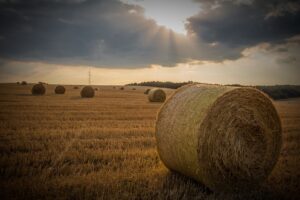Economic Trends in Russia’s Rural Areas
Introduction
Russia’s rural areas have always played a crucial role in the country’s economy. While urban areas often receive more attention, rural areas are responsible for producing a significant portion of Russia’s agricultural output. In recent years, several economic trends have emerged in Russia’s rural areas that are shaping the country’s overall economic landscape.
Agricultural Production
Agriculture has long been a cornerstone of Russia’s economy, and rural areas are at the heart of the country’s agricultural production. In recent years, there has been a significant increase in the production of crops such as wheat, barley, and sugar beets. This increase in agricultural production has been driven by technological advancements, improved infrastructure, and government support for the agricultural sector.
Infrastructure Development
Infrastructure development has been a key focus in Russia’s rural areas, with the government investing in projects such as road construction, irrigation systems, and agricultural machinery. These investments have helped to improve transportation networks, increase access to markets, and boost agricultural productivity in rural areas.
Small Business Growth
In recent years, there has been a significant growth in small businesses in Russia’s rural areas. These businesses range from family-owned farms to small manufacturing enterprises, and they play a crucial role in driving economic growth and creating jobs in rural communities. The government has implemented policies to support small businesses, such as tax incentives and access to financing, which has helped to stimulate entrepreneurship in rural areas.
Technological Advancements
Technological advancements have played a key role in transforming Russia’s rural economy. The adoption of modern agricultural practices, such as precision farming and use of drones for crop monitoring, has helped to increase agricultural productivity and efficiency. In addition, the development of e-commerce platforms has opened up new opportunities for rural businesses to reach customers and expand their markets.
Challenges
Despite the positive economic trends in Russia’s rural areas, there are several challenges that continue to impact rural communities. One major challenge is the aging population in rural areas, with many young people leaving for larger cities in search of better job opportunities. This demographic shift has led to a shortage of skilled labor in rural areas, posing a threat to the sustainability of agricultural production.
Another challenge is the lack of access to modern technology and infrastructure in some rural areas. While the government has made significant investments in infrastructure development, there are still many remote rural communities that lack access to basic services such as electricity and internet connectivity. This lack of infrastructure hinders economic development and limits the ability of rural businesses to compete in the global market.
Government Initiatives
To address these challenges and support economic growth in rural areas, the Russian government has implemented several initiatives. One key initiative is the Rural Development Program, which aims to improve infrastructure, support small businesses, and create new job opportunities in rural areas. The government has also introduced measures to attract young people back to rural areas, such as providing incentives for graduates to work in agriculture and rural development.
Conclusion
In conclusion, Russia’s rural areas play a vital role in the country’s economy, particularly in the agricultural sector. Recent economic trends in rural areas, such as increased agricultural production, infrastructure development, small business growth, and technological advancements, are shaping the future of Russia’s rural economy. While there are challenges that need to be addressed, the government’s initiatives to support rural development are helping to create a more sustainable and prosperous future for rural communities in Russia.





